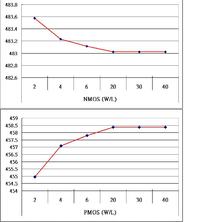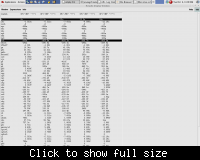allennlowaton
Full Member level 5

hello guys..can help me with this..
guys please help me explain this..in NMOS: as (W/L) increases, the Vth decreases until it settle to a certain value. while the PMOS: as (W/L) increases, the Vth increases until it settle to a certain value.
The Vgs for NMOs and PMOs are 0.8V.
The supplied Vdd is 1.8V for each of them.
Please to the attachment for more info.
(The values used in the graph is derived from the HSPICE .lis file generated from simulations)

Thank you very much.
guys please help me explain this..in NMOS: as (W/L) increases, the Vth decreases until it settle to a certain value. while the PMOS: as (W/L) increases, the Vth increases until it settle to a certain value.
The Vgs for NMOs and PMOs are 0.8V.
The supplied Vdd is 1.8V for each of them.
Please to the attachment for more info.
(The values used in the graph is derived from the HSPICE .lis file generated from simulations)

Thank you very much.





